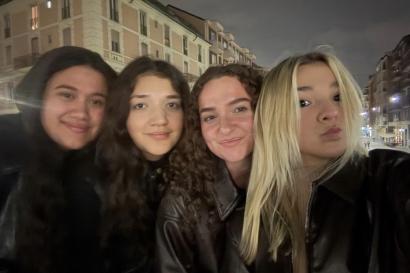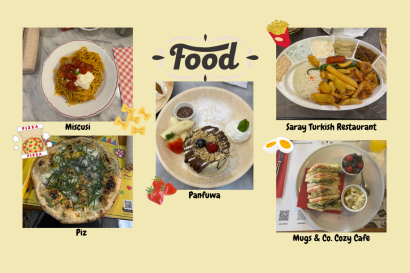During Carnival, anything goes... (Which is another way to say that all pranks and jokes are free game during this month - think April Fool's Day lasting for 28 days)
It's Carnival, or as Italians say, "Carnevale" season! Which would explain all the confetti I've been seeing scattered over the streets everywhere I go... I've always associated this time of year with the famous Mardi Gras festivals held in New Orleans so being in Europe has been an entirely different experience. Especially since I'm Jewish, I was never too familiar with what Carnival actually entails. And what better place to learn more about it than in Italy, a country that holds some of the most well-known Carnival traditions dating back to the Medieval times. In Italy, as in many other countries around the world, the entire month of February is dedicated to endless festivities; full of masks, costumes, parades, and celebrations. I've collected some fun facts about Carnival over the past few weeks and now feel fully prepared for what to expect this weekend, as the celebrations actually start in Milan, instead of end as they do in the rest of Italy.
1. Milan gets to celebrate Carnival for four extra days because the patron saint of the city, Saint Ambrose, was away on a pilgrimage during the holiday and couldn't come back in time to celebrate so the Pope granted Milan the extra days. Because of this, Milan is the only city in the world that follows its own calendar for Easter, observing Ash Wednesday on the first Sunday of Lent.
2. The word carnival is said to originate from the Latin expression carnem levare which means 'farewell to meat', referencing to the day before Lent starts since during this time no meat is eaten.
3. Puglia, the southern region of Italy found as the heel of the boot on a map, hosts one of the oldest known carnival celebrations in Italy that started in 1394.
4. Every region in Italy has its own food specialties for the month - Lombardy (Milan's region) has the chiacciere which comes from the Italian verb chiaccierare meaning to chat/gossip. These are deep-fried pastries coated in sugar and can be found in every pasticceria during the month. Once you eat one, there's no turning back.
5. The Carnival in Venice is the most popular celebration in Italy, characterized by its famous Venetian masks. The first documentation of the use of masks in Venice goes back to the 13th century and was originally a response to class hierarchies. It wasn't until the Renaissance that the masks became a feature of Carnival celebrations. Today over 3 million people travel to Venice every year to take part in the festivities.
6. Traditionally, Carnival was a time for all men and women to stand as equals in some sense, disguised behind their costumes so that no matter what your background was, you were considered equal to the person standing next to you.
7. Bauta is a popular type of mask worn today, dating back to the 18th century when people would wear it with a black cape to political events. It has a grotesque look and covers the face completely, adding to the mysterious atmosphere of the celebrations.

Abby Grinberg
Abigail is our 2016-17 IES Abroad Blogger of the Year! Abigail studies Economics and International Studies with a minor in Business Administration at Brandeis University—where she is also an IES Abroad Ambassador. As a Fall 2016 and Spring 2017 Blogger, Abigail illustrated her year abroad in Milan through her insightful posts and candid photography that navigated her growth in the historical city of Milan.









